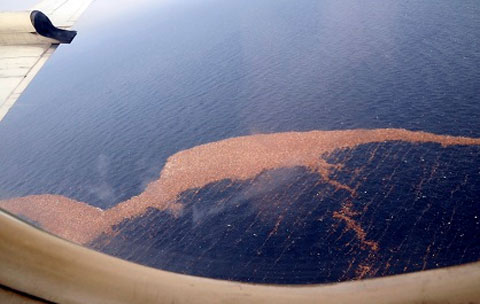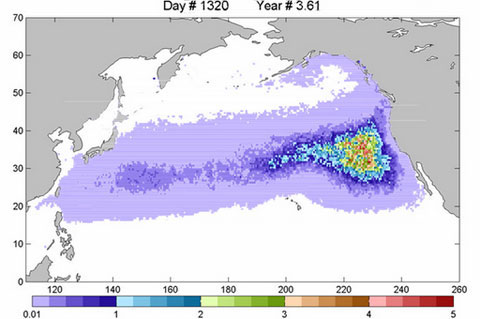Japanese tsunami garbage to Hawaii
The waves of tsunami swept after the double disaster in northeastern Japan last year are very close to the Hawaiian Islands, and will reach the west coast of the United States in another year.
"Mobile Island" consists of many pieces of wood, boats and other debris that have traveled nearly 5,000km from the northeastern coast of Japan to the north of the Pacific, AP said.

The debris swept away by the tsunami into the sea is important
Magnetic word on a plane. (Photo: Beachbelievers)
The National Oceanic and Atmospheric Administration (NOAA) predicts that the first debris will soon reach the small atolls in the northwest of the Hawaiian Islands. Between March 2013 and March 2014, this "mobile island" will reach the coasts of the US states of Oregon, Washington, Alaska and even part of Canada's west coast.
NOAA's post-tsunami coordinator, Ruth Yender told an online meeting yesterday that NOAA employees are on flights from the US Coast Guard. . Their mission is to monitor the Hawaiian Islands, in the central Pacific region. NOAA also requires scientists at Midway, a coral island in the north of the Pacific Ocean and in the US, as well as many other places to follow the movement of "mobile islands".
Mr. Yender also said that it is unlikely that debris floating on the sea will be exposed to radiation, since they originated in many different areas, not just from the area near the Fukushima I. nuclear power plant.

The figure depicts the path of "mobile island" from the coast of Japan
to the west coast of the US and Canada. (Graphics: Desdemonadespair)
The original debris gathered into a thick mass on the ocean after being swept away by tsunamis from the northeast coast of Japan. Much of this is then sunk, but there are still many debris floating in the sea. In September 2011, a Russian training ship discovered a refrigerator, a television and many other household items on the west side of Hawaii. Nikolai Maximenko, a University of Hawaii researcher and expert on ocean currents, said that the debris is now far apart from each other, so it can only find sporadic objects floating on the sea.
About one to two million tons of debris is still floating in the ocean, but only one-fifth of them can reach the coasts of the US and Canada, Maximenko said. A tsunami up to 15m high on the northeastern coast of Japan in March 2011 created 20 to 25 million tons of debris, including debris remaining on land.
Maximenko also said the Japanese tsunami debris into the ocean would enter a floating sea of garbage between Hawaii and the state of California, which was created by swirling currents in the Pacific Ocean. The majority of this huge junk is plastic pieces, which will slowly break into smaller pieces but will not disappear completely.
On March 11, 2011, a 9-magnitude earthquake caused a 15m high tsunami that devastated the northeastern coast of Japan, killing more than 19,000 people and still missing. Earthquakes and tsunamis also led to a crisis in the Fukushima I nuclear power plant, the world's worst nuclear disaster since the 1986 Chernobyl disaster.
- Tsunami hit Hawaii
- Garbage after tsunami in Japan drifted to America
- 'Scar' in the heart of Japanese tsunami victims
- Japanese tsunami system focused on evacuating people
- Millions of tons of garbage drifted from Japan to the United States
- The giant Pacific Island trash island will be cleared with this wonderful system
- Accurate tsunami warning thanks to marine vessels
- The Japanese are afraid of the 'black tsunami' coming soon
- America - Japan cooperates to monitor pillar garbage
- Tsunami in 2011 brought millions of creatures from Japan to the US coast
- Japanese tsunami landed on Alaska
- Garbage island is twice as large as Vietnam's land area about to dock
 Is the magnetic North Pole shift dangerous to humanity?
Is the magnetic North Pole shift dangerous to humanity? Washington legalizes the recycling of human bodies into fertilizer
Washington legalizes the recycling of human bodies into fertilizer Lightning stone - the mysterious guest
Lightning stone - the mysterious guest Stunned by the mysterious sunset, strange appearance
Stunned by the mysterious sunset, strange appearance